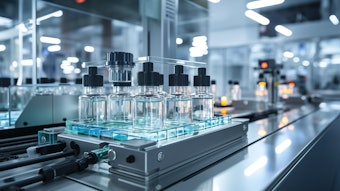
Read the complete article in the C&T July/August 2023 digital edition.
The concepts of psychodermatology1 and neurocosmetics have merged with well-being2 and holistic beauty trends. Stress, depression and anxiety can impair sleep and negatively impact an individual’s lifestyle, including dietary consumption. Such outcomes contribute to chronological and psychodermatological aging. Accordingly, neuroprotective agents with added benefits for skin homeostasis could improve the function of cutaneous cells.1 These materials are therefore significant to the current movement in psychodermatology – especially bioactives inspired by holistic medicine. Nonetheless, supporting evidence in terms of the biological activities of these materials is underappreciated.
Tea is a medicinal herb that has long been used in traditional remedies for anxiety and stress management.3 Typically processed from the leaves of Camellia sinensis or C. assamica,4 the health benefits of tea support a variety of product applications including cosmetics,5 which could additionally leverage the actives in tea to protect against skin aging.2
Theanine is a key active in tea with neuroprotective activity, as per its ability to reduce fatigue.5 The stress-reducing, anti-anxiety activities of theanine (or g-glutamyethylamide) mitigate cellular damage by free radicals. This tea-derived compound is therefore widely used and promoted in functional foods or dietary supplements.6 Nonetheless, the holistic skin care potential of theanine has yet to be explored.
The present study examines green tea-derived theanine in terms of cellular safety and as a neuroprotectant and anti-aging agent, in comparison with ascorbic acid. The material is challenged in dermal skin cells, i.e., fibroblasts and keratinocytes, for antioxidant benefits and effects on collagen and MMP-1 to clarify its holistic anti-aging efficacy for potential psychodermatological applications. In addition, effects on keratinocyte proliferation are assessed.
Read the complete article in the C&T July/August 2023 digital edition.
References
- Jafferany, M. and Franca, K. (2016). Psychodermatology: Basics concepts. Acta Derm Venerol. 217 35-37.
- Kanlayavattanakul, M. and Lourith, N. (2015). An update on cutaneous aging treatment using herbs. J Cosmet Laser Ther. (17) 343-352.
- Mendelson, S.D. (2023). Herbal Treatment of Anxiety. Clinical Studies in Western, Chinese and Ayurvedic Traditions. CRC Press, Florida.
- Becker, L.C., Bergfeld, W.F., ... Heldreth, B., et al. (2019). Safety assessment of Camellia sinensis-derived ingredients as used in cosmetics. Int J Toxicol. (38) 48S-70S.
- Samanta, S. (2022). Potential bioactive components and health promotional benefits of tea (Camellia sinensis). J Am Nutr Assoc. (41) 65-93.
- Saeed, M., Naveed, M., ... Sun, C., et al. (2017). Green tea (Camellia sinensis) and L-theanine: Medicinal values and beneficial applications in humans – A comprehensive review. Biomed Pharmacother. (95) 1260-1275.











